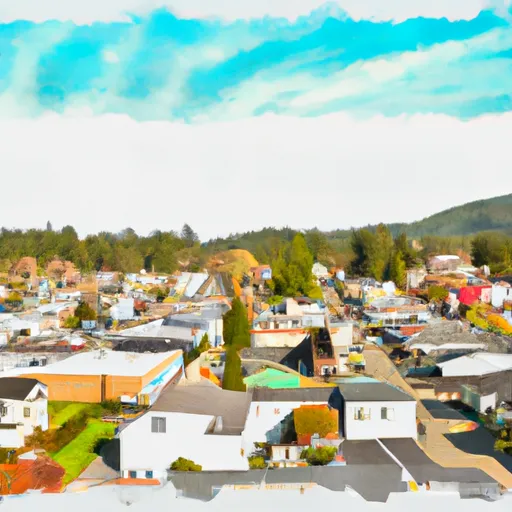-
 Snoflo Premium
Snoflo Premium
Get unlimited access to all our content
With no Ad interruptions! - Start Your Free Trial Login with existing account
Moxee
Eden Index
Climate
8.3
•
Recreation
3.8
•
Community
0.7
•
Safeguard
4.8/10

Moxee is a small town located in the Yakima Valley region of Washington state. The town experiences a semi-arid climate with hot, dry summers and cool winters. Summers are characterized by high temperatures ranging from 85°F to 95°F, while winters see average temperatures between 30°F and 40°F. Moxee receives minimal rainfall throughout the year, with most precipitation occurring during the winter months.
The hydrology of Moxee is influenced by the Yakima River, which flows through the region. The river provides a vital water source for irrigation, supporting the area's agricultural activities. Moxee is also surrounded by numerous small creeks and irrigation canals that contribute to the local hydrology.
Outdoor enthusiasts can explore a variety of recreational opportunities in the area. The nearby Yakima River offers excellent fishing opportunities, with popular species including trout, salmon, and steelhead. Hiking and biking trails are available in the surrounding hills and mountains, providing stunning views of the valley below. Moxee is also close to several national parks, including Mount Rainier and North Cascades National Park, offering opportunities for camping, hiking, and wildlife watching.
What is the Eden Index?
The Snoflo Eden Index serves as a comprehensive rating system for regions, evaluating their desirability through a holistic assessment of climate health, outdoor recreation opportunities, and natural disaster risk, acknowledging the profound impact of these factors on livability and well-being.
Climate Health Indicator (CHI): 8.3
Moxee receives approximately
217mm of rain per year,
with humidity levels near 72%
and air temperatures averaging around
10°C.
Moxee has a plant hardyness factor of
6, meaning
plants and agriculture in this region thrive during a short period during spring and early summer. Most
plants will die off during the colder winter months.
By considering the ideal temperature range, reliable water supplies, clean air, and stable seasonal rain or snowpacks, the Climate Health Indicator (CHI) underscores the significance of a healthy climate as the foundation for quality living.
A healthy climate is paramount for ensuring a high quality of life and livability in a region, fostering both physical well-being and environmental harmony. This can be characterized by ideal temperatures, reliable access to water supplies, clean air, and consistent seasonal rain or snowpacks.
Weather Forecast
Streamflow Conditions
Yakima
Area Rivers
Yakima
Snowpack Depths
Yakima
Reservoir Storage Capacity
Yakima
Groundwater Levels
Recreational Opportunity Index (ROI): 3.8
The Recreational Opportunity Index (ROI) recognizes the value of outdoor recreational options, such as parks, hiking trails, camping sites, and fishing spots, while acknowledging that climate plays a pivotal role in ensuring the comfort and consistency of these experiences.
Access to outdoor recreational opportunities, encompassing activities such as parks, hiking, camping, and fishing, is crucial for overall well-being, and the climate plays a pivotal role in enabling and enhancing these experiences, ensuring that individuals can engage in nature-based activities comfortably and consistently.
Camping Areas
| Campground | Campsites | Reservations | Toilets | Showers | Elevation |
|---|---|---|---|---|---|
| Roza - Yakima River Canyon | None | 1,248 ft | |||
| Big Pines - Yakima River Canyon | None | 1,258 ft | |||
| Lmuma Creek - Yakima River Canyon | None | 1,274 ft | |||
| Yakima Sportsman State Park | None | 1,005 ft | |||
| Umtanum - Yakima River Canyon | None | 1,386 ft | |||
| Fiorito Ponds - WDFW | None | 1,435 ft |
Nearby Ski Areas
Catastrophe Safeguard Index (CSI):
The Catastrophe Safeguard Index (CSI) recognizes that natural disaster risk, encompassing floods, fires, hurricanes, and tornadoes, can drastically affect safety and the overall appeal of an area.
The level of natural disaster risk in a region significantly affects safety and the overall livability, with climate change amplifying these risks by potentially increasing the frequency and intensity of events like floods, fires, hurricanes, and tornadoes, thereby posing substantial challenges to community resilience and well-being.
Community Resilience Indicator (CRI): 0.7
The Community Resilience Indicator (CRI) recognizes that education, healthcare, and socioeconomics are crucial to the well-being of a region. The CRI acknowledges the profound impact of these elements on residents' overall quality of life. By evaluating educational resources, healthcare accessibility, and economic inclusivity, the index captures the essential aspects that contribute to a thriving community, fostering resident satisfaction, equity, and social cohesion.

